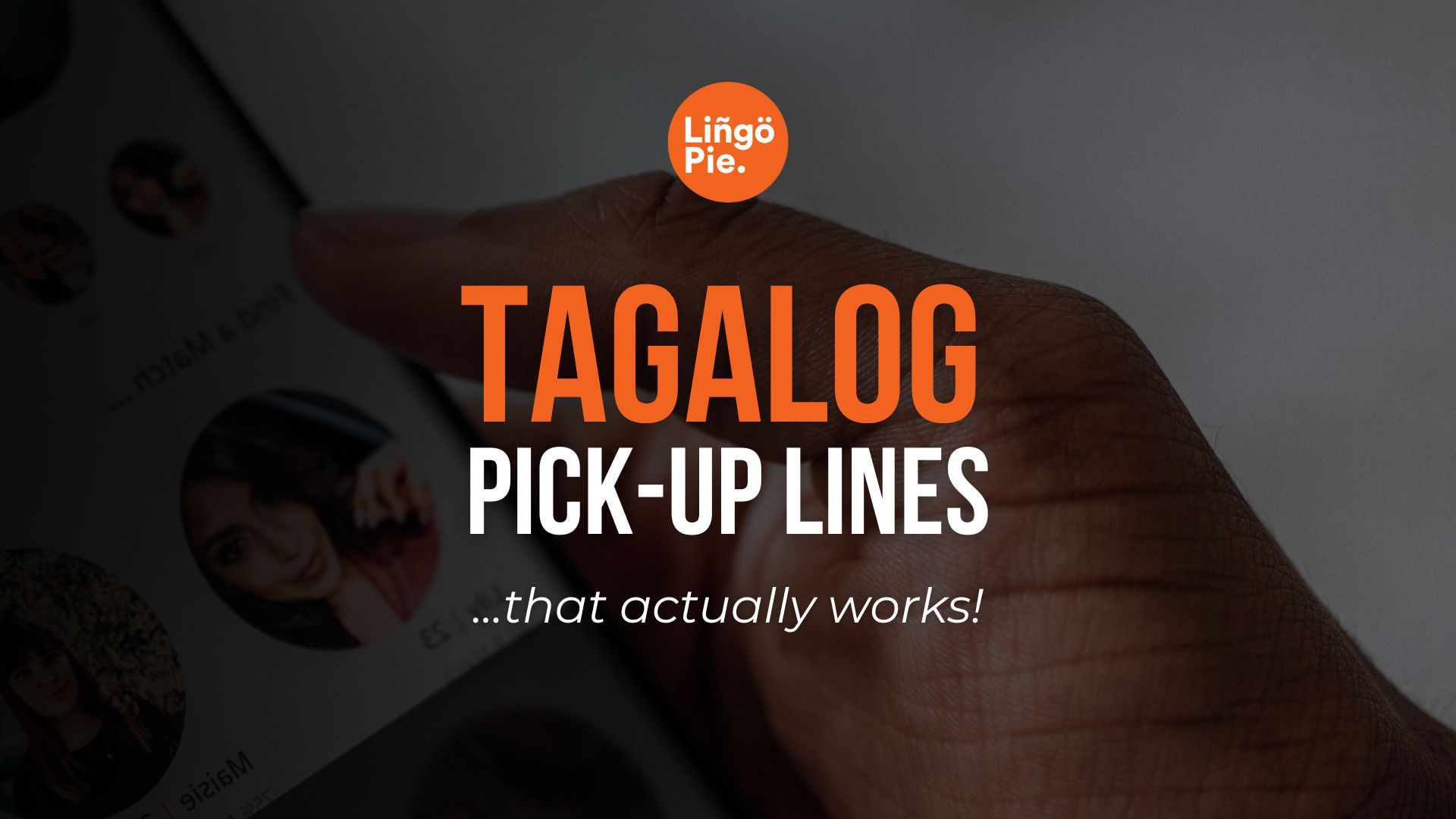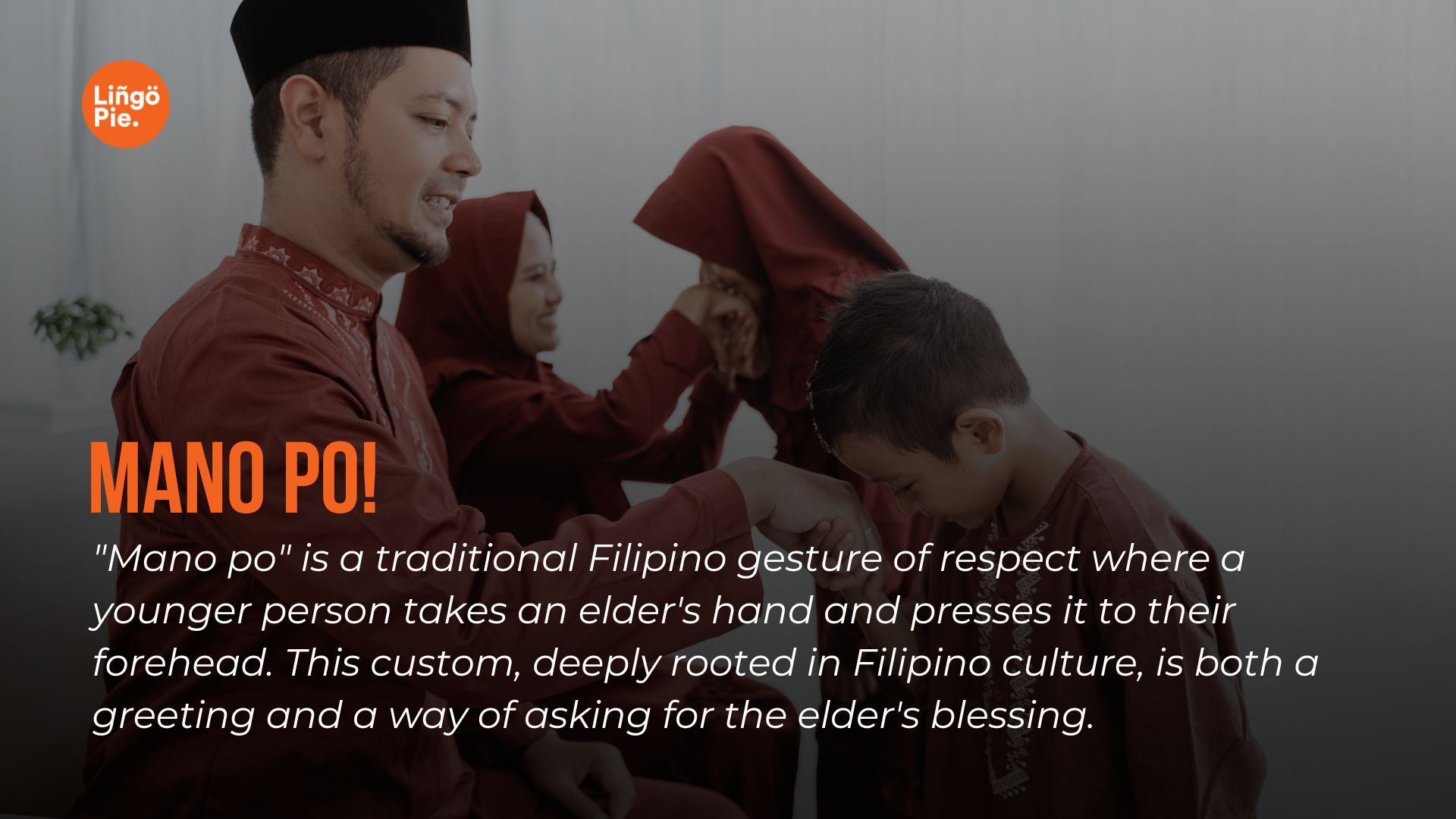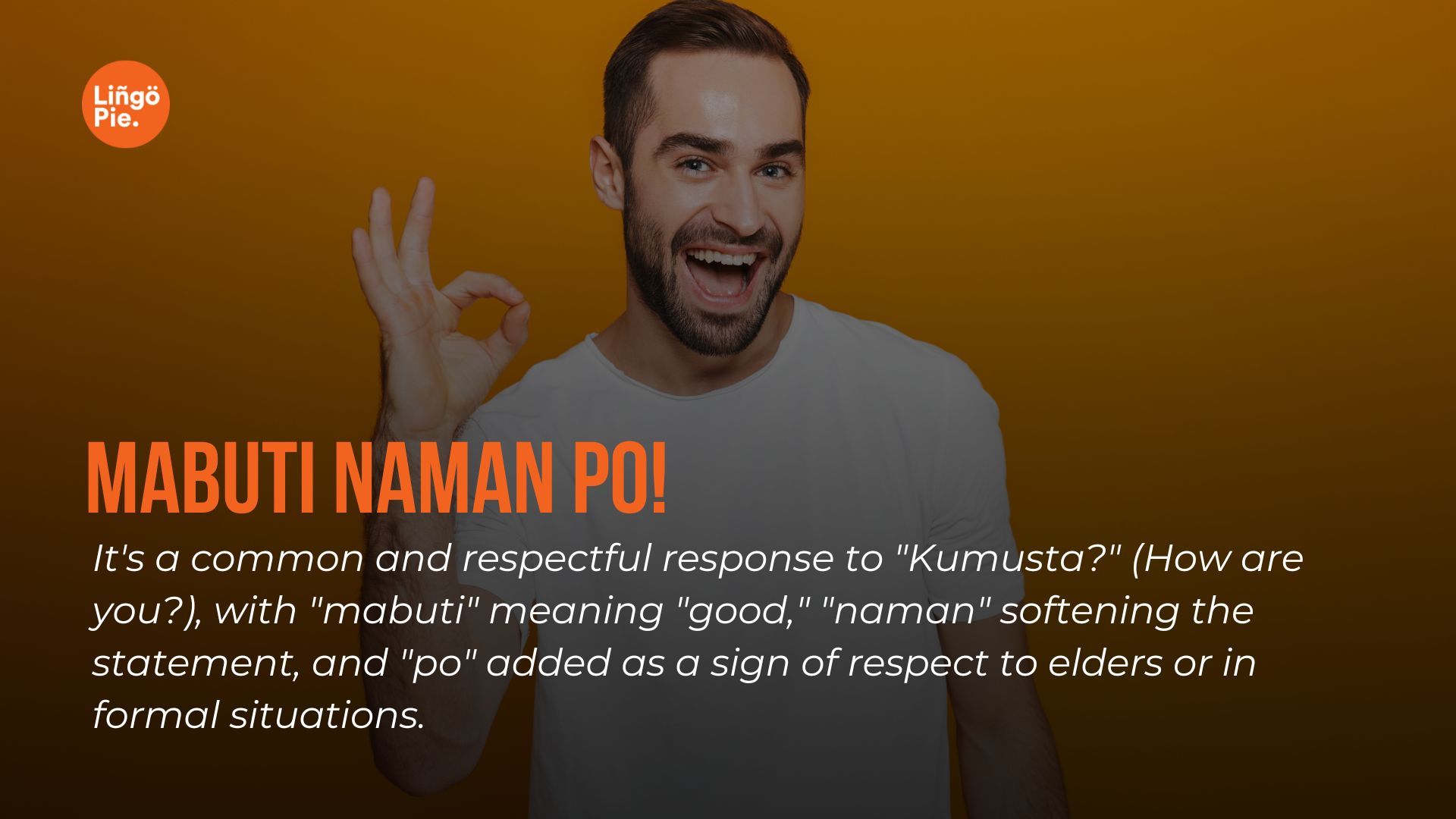As a lifelong Filipino and native Tagalog speaker, I've seen countless tourists light up with delight when greeted in our language. It's true – we Filipinos are known for our warmth and friendliness. But behind all that, I know that we can also be surprisingly shy around visitors.
Want to instantly break the ice and win hearts?
It's simple: learn to say hello in Tagalog.
In this guide, I'll share not just the words, but the cultural nuances behind our greetings. Whether you're planning a trip to our beautiful islands or just want to surprise your Filipino friends, mastering these hellos will open doors you never knew existed.

Is It Important To Say Hello In Tagalog?
Yes, saying hello in Tagalog is important when visiting the Philippines. It shows respect for Filipino culture, helps break the ice with locals, and can enhance your overall travel experience. While English is spoken by 47% of Filipinos, especially in business settings, using Tagalog greetings demonstrates a genuine interest in connecting with us and our traditions.
By making an effort to speak at least some Tagalog words, you're likely to have more meaningful exchanges and potentially gain access to local insights and experiences that might otherwise be missed. It's a small gesture that can make a big difference in how you're perceived and welcomed during your visit.

What Is Hello In Tagalog?
Interestingly, there's no direct translation for "Hello" or "Hi" in Tagalog. Instead, Filipinos use a Tagalized version of the Spanish phrase cómo está, which in Tagalog is "Kumusta?" This greeting serves as the closest equivalent to "Hello" in everyday conversations.
To better understand how Filipinos greet each other, let's explore the casual, formal, and slang ways of saying hello in Tagalog.
Casual Ways To Say Hello in Tagalog
- Hello/Hi: These English greetings are commonly used in natural conversations, often with "po" added for respect.
Example: "Hello po!" (Hello, sir/ma'am!) - Kumusta/Kumusta: This is the most common greeting, equivalent to "How are you?"
Example: "Kumusta ka?" (How are you?) - Kumusta kayo: This is the plural or more formal version of "Kumusta ka?"
Example: "Kumusta kayo, Ginoo?" (How are you, Sir?)
Formal Ways to Say Hello in Tagalog
- Mabuhay: This formal greeting literally means "live" and is used in ceremonial or very formal situations.
Example: "Mabuhay, mga kababayan!" (Greetings, fellow countrymen!)
Slang Ways To Say Hello In Tagalog
- Hoy: A casual way to get someone's attention, used among close friends.
Example: "Hoy, kumain ka na ba?" (Hey, have you eaten yet?) - Oy: Similar to "Hoy," this is a very informal way to call out to someone you're familiar with.
Example: "Oy, dito ka!" (Hey, over here!)
Social Media and Internet Greetings in Tagalog
Just like everywhere else in the world, we Filipinos have our own special way of saying hello online! Whether you're sliding into DMs or commenting on posts, here's how to greet like a true digital Filipino:
- Hello sa lahat: This literally means "hello to all" and is commonly used as a greeting in social media posts or when entering group chats.
- Helloo/Hiii: Yes, we love adding extra letters! The more letters, the more enthusiastic the greeting. "Hellooooo" or "Hiiiiii" is very common in casual online conversations.
- Haloo/Helo: These intentionally misspelled versions are used playfully, especially among younger Filipinos. Think of it as our version of "hai" or "henlo."
- 'Tol/'Pre: Short for "kapatid" (brother) and "pare" (buddy) respectively, these are super casual ways to say hi to friends online, similar to "bro" in English.
- Pips: This is how many Filipinos write "peeps" (people). "Hello pips!" is a friendly, informal way to address a group online.
- Musta na: A shortened version of "kumusta na," very common in text messages and social media comments.
Remember, the context and your relationship with the person you're greeting play a significant role in choosing the appropriate Tagalog hello. The slang terms should be used cautiously as they can sound impolite and almost like a Tagalog swear word if used incorrectly or with strangers.

Polite Ways To Say Hello In Tagalog
Politeness is a cornerstone of Filipino culture, deeply embedded in social interactions. Using respectful language is not just appreciated but expected, especially when greeting others.
Let's explore some ways to make your Filipino greetings extra native-sounding.
Saying 'Po' And 'Opo'
'Po' and 'opo' are honorific particles that convey respect and politeness in Tagalog. They're commonly used when speaking to elders, authority figures, or in formal situations with strangers.
Example:
- "Kumusta po kayo?" (How are you? - polite form)
- "Kamusta po?" (How are you? - shorter polite form)
Just to be clear, please remember that 'opo' is the polite Tagalog equivalent of 'yes'.

Saying Mano Po
"Mano po" is a unique Filipino cultural tradition that serves as both a greeting and a profound gesture of respect towards elders. This practice, deeply rooted in Filipino values of family, respect, and hierarchy, is an essential part of Filipino social etiquette.
The ritual involves the following steps:
- The younger person says "Mano po" to the elder.
- They then take the elder's hand.
- They bring the back of the elder's hand to their forehead.
This gesture is called "pagmamano" and is believed to be a way of receiving the elder's blessing. The word "mano" comes from the Spanish word for "hand," while "po" is the Tagalog respect particle.
"Mano po" is typically used with:
- Parents and grandparents
- Aunts and uncles
- Godparents
- Elderly relatives
- Respected community elders
- Former teachers or mentors
Polite Words For Greeting Someone Based On Gender
In Tagalog, there are gender-specific terms used to show respect when greeting or addressing people. Understanding how to use these words correctly is crucial for polite interaction.
Here's how to incorporate them into your greetings:
'Kuya' is used when addressing older males, though it can be used for younger men as a sign of respect. It's typically placed at the beginning of the sentence or immediately before the name.
Examples:
- "Kuya, kumusta po?" (Brother, how are you?)
- "Magandang umaga, Kuya John." (Good morning, Brother John.)
'Ate' is the female equivalent of 'Kuya', used for older women or as a polite term for younger women. Like 'Kuya', it's usually placed at the beginning of the sentence or before the name.
Examples:
- "Ate, kumusta na po kayo?" (Sister, how are you doing?)
- "Hello po, Ate Maria." (Hello, Sister Maria.)
'Tito' is a respectful term used for addressing older men, typically those of your parents' generation. It literally means "uncle" but is often used for family friends or older male acquaintances as well.
Examples:
- "Tito, magandang hapon po." (Uncle, good afternoon.)
- "Kumusta po, Tito Carlos?" (How are you, Uncle Carlos?
'Tita' is the female equivalent of 'Tito'. It means "aunt" and is used to address older women, including family friends, and acquaintances of your parents' age group.
Examples:
- "Tita, salamat po sa pagpunta." (Aunt, thank you for coming.)
- "Magandang gabi po, Tita Elena." (Good evening, Aunt Elena.)

How To Respond To Hello In Tagalog
In Filipino culture, greetings are more than just a formality – they're an opportunity to show respect, establish rapport, and express genuine interest in others' well-being. Knowing how to respond appropriately to a greeting in Tagalog is crucial for navigating social interactions in the Philippines.
Let's explore the various ways to reply to greetings in Tagalog, from basic responses to more nuanced and context-specific replies:
Basic Responses
When someone greets you with "Kumusta?" (How are you?), you have several options:
- "Mabuti" (Fine/Good)
- "Mabuti naman" (I'm doing well)
- "Okay lang" (Just okay)
Polite Responses
In formal situations or when addressing elders, add "po" to show respect:
- "Mabuti po" (Fine, sir/ma'am)
- "Mabuti naman po, salamat" (I'm doing well, thank you sir/ma'am)
Reciprocating the Greeting
It's customary to inquire about the other person's well-being in return:
- "Mabuti, ikaw?" (Fine, and you?)
- "Okay lang. Ikaw, kumusta?" (Just okay. How about you?)
Casual Responses
In informal settings or among friends, you might use:
- "Ayos lang" (All good)
- "Okay lang" (Just okay)
- "Buhay pa" (Still alive - a humorous response)
How To Greet Someone At Different Times Of The Day
In Tagalog, like in many languages, there are specific greetings for different times of the day. These greetings can be used before or instead of "Kumusta ka?" to show awareness of the time and add a touch of formality or warmth to your greeting. Here are the common time-specific greetings in Tagalog:
| English | Tagalog | Pronunciation Guide |
|---|---|---|
| Good morning | Magandang umaga | Ma-gan-dang oo-ma-ga |
| Good noon | Magandang tanghali | Ma-gan-dang tang-ha-li |
| Good afternoon | Magandang hapon | Ma-gan-dang ha-pon |
| Good evening | Magandang gabi | Ma-gan-dang ga-bi |
| Good day | Magandang araw | Ma-gan-dang a-raw |
| Have a nice day | Magandang araw sa iyo | Ma-gan-dang a-raw sa i-yo |
| Good night (when parting) | Magandang gabi | Ma-gan-dang ga-bi |
Saying Hello In The Philippines
While you've now mastered Tagalog greetings, "Kumusta" might not always be the hello you hear across our 7,641 islands! That's because Tagalog is actually just one of over 150 languages spoken throughout our archipelago. Tagalog is indeed the basis for our national language Filipino (alongside English), but it's the first language of only about a third of Filipinos!
Here's a peek at some greetings you might encounter in your travels:
| Language | Greeting | Pronunciation Guide |
|---|---|---|
| Cebuano | Maayong adlaw | mah-AH-yong AD-law |
| Ilocano | Naimbag nga aldaw | nah-eem-BAG nga al-DAW |
| Hiligaynon | Maayong aga | mah-AH-yong AH-ga |
| Waray | Maupay | mah-OO-pai |
| Kapampangan | Mayap a aldo | mah-YAP ah AL-do |
This linguistic diversity reflects our country's rich cultural heritage, with each language carrying centuries of stories and traditions. So while Tagalog will serve you well in Manila, there's a whole world of Filipino greetings waiting to be discovered!
Say Hello In A Foreign Language With Lingopie
So, you've nailed those Tagalog greetings, huh? Awesome! But why stop at one language when you could learn so much more?
Say hello to Lingopie - the coolest way to level up your language game while binge-watching your favorite shows. Yep, it's the secret that turns your TV time into language-learning time. Just imagine being able to...
- Spice up your Spanish with the hottest telenovelas
- Master the art of Italian cooking with Italian cooking shows
- Level up your Japanese with addictive anime
- Master K-drama speak with Korean TV shows and movies
But that's not all! French, German, Portuguese, Russian - it's a whole world tour without leaving your couch! So the next time someone gives you a grunt about your TV habits, hit 'em with this: "I'm not just watching shows, I'm learning languages!" Boom!
Give Lingopie's features a try now!


![6 Best Ways To Say Hello In Tagalog [A Traveler's Guide]](/blog/content/images/size/w1200/2024/07/6-Best-Ways-To-Say-Hello-In-Tagalog--A-Traveler-s-Guide-.jpg)






![How To Say Happy Birthday In Punjabi [Complete 2025 Guide]](/blog/content/images/size/w300/2024/07/How-To-Say-Happy-Birthday-In-Punjabi.jpg)
